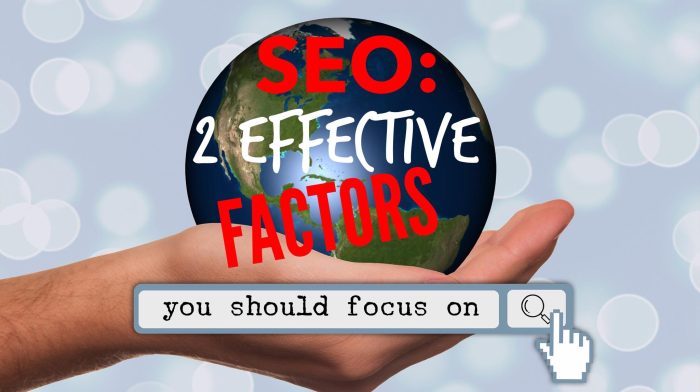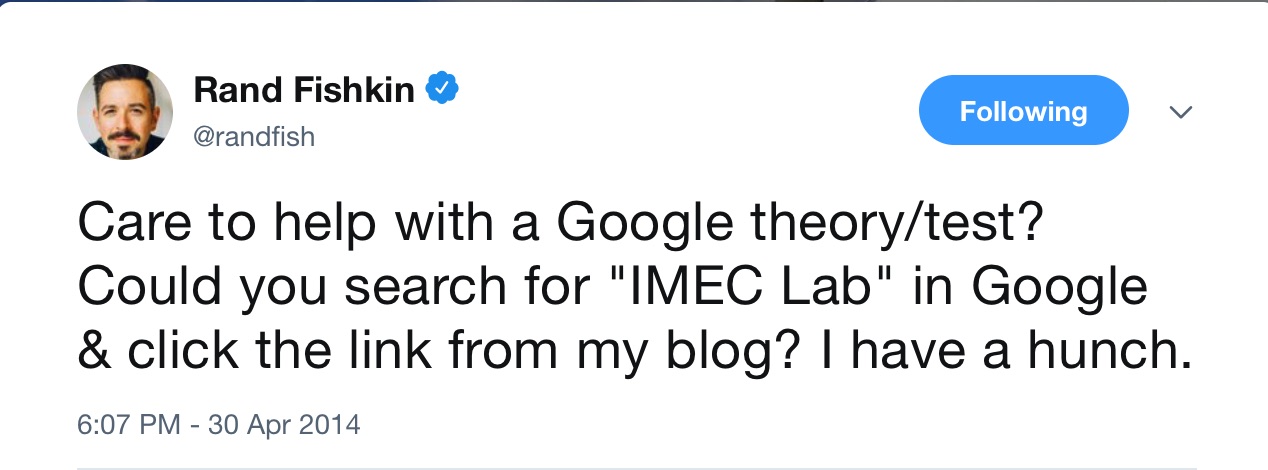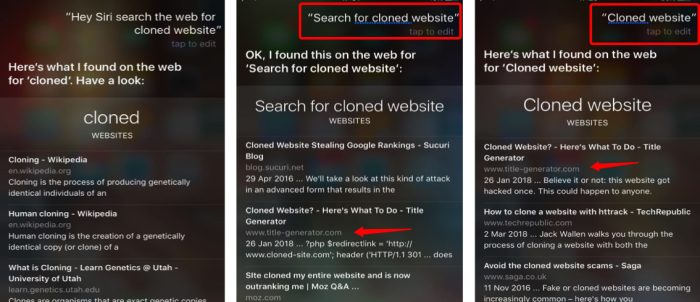
SEO: Two Effective Factors You Should Focus On
Oh YES! The Ultimate dream of anyone with an online presence!
Sooo, how does one do it when this is not an exact science?
There are hundreds (thousands) of articles on SEO and without a doubt a few more hundreds will be published every year.
SEO is somewhat a mysterious art to rank a page in search engines and requires a lot of patience and work.
The more you read about it the more confused you get – “Should I build external links, optimize my images or should I focus on the technical part?”
Quick answer: yes. And that’s the bad news.
The good news is that you can implement 2 things that can influence and reward your SEO efforts in the very near future.
And I’ll provide proof with one article on this very website.
For the purpose of this article I’ll assume that WordPress, Joomla or some kind of professional CMS is used – this alone will take care by itself of a big chunk of the technical part.
Without further ado, here are the two SEO tactics that you have control over.
1. Internal and External Links
Every time you publish an article, link internally to another article. It’s the best SEO practice you can implement immediately.
Link to a similar topic with relevant keywords in a natural way.
Example: if I were to create an internal link in this article I would link it to Neil Patel’s New Backlinking Strategy, because that article is about SEO as well.
You can do this every time there is a keyword or phrase that naturally embeds in the text – naturally means without forcing it.
Do the same thing linking to an external page – external means a page/website you do not own. Just make sure that is relevant. There are quite a few example in this article. The general rule is to open external links in a new tab.
How is this tactic helping SEO-wise?
This simple yet effective SEO factor will help you “boost” the other article’s authority. Internal or external link, it doesn’t really matter.
The more links you create towards an article, the more “votes” that article receives.
Don’t be afraid to link out to other websites – the old Page Rank is not an SEO factor anymore, at least is not what it used to be – you do not lose that “valuable” PR Juice. In fact you’ll help the Google search bot “understand” what is your article about – remember relevancy.
2. Time on Page, CTR, User Experience and Dwell Time
Yes, these are four things but they are closely related. Give me a minute to explain.
Don’t you just hate when you run a Google search and you have to click back and forth to find the information you are looking for?
The above phenomenon in SEO terms is called “Pogo sticking”. Visitors in search of information go back to their Google search and click the next result.
In 2014 Rand Fishkin tested this: he asked his Twitter followers to run a Google search for a specific key phrase and click on a specific link within the results.

A few hours and a few hundred clicks later that specific article mysteriously climbed up in the SERPs (Search Engine Position Ranking) to a top position.
In this article, Rand explains what happened: if a bunch of people click on a specific link within the search results and they spend more time on that page then on the competing sites, that particular page will be moved up in the results.
Basically Google attributes value to those pages that people spend more time on.
There is a tiny disclaimer at the end of the video: if the searches and clicks are artificial, Google will revert to the original results.
The good ol’ saying “Content is King” will always be actual.
So when you write you next article and share it with your audience on Facebook or Twitter, a few visitors will read your material.
Google notices that there is new content published and temporarily will place you in the search results: “Let’s test and see if people are interested in this”.
In order to avoid “Pogo Sticking”, before hitting the publish button, ask the following questions:
- Does the article provide value to the reader?
- Was there enough research done before it was written?
- Does it offer a solution?
- Answers a question?
- Is it detailed?
If the answer is no to any of those questions, than it will not be enough for your visitors (and Google).
If a Google Analytics reports show that readers don’t spend enough time to read what is published or don’t spend enough Time on Page, than the content itself doesn’t provide enough value.
Here are a few tips to improve metrics:
- Create a good headline – How To…, [Number] of Solutions for [Topic]. And FFS: avoid clickbaits. Deliver on that headline.
- Include relevant images to break up text. Give the eye a break. Include captions on the pictures – they are the most read text on the entire page. Don’t forget to optimize the images to load faster.
- Sub Heads or Cross Heads – it will give the reader the chance to scan through the content.
- Write short paragraphs and include bullet points – it’s much easier to read.
Learn the basics of copywriting – for some reason people think that the only thing copywriting is used for is to sell stuff. That is partially true. Copywriting will also help in writing better and more engaging content. You do not have to sell anything!
.
Here is some SEO Proof 🙂
Obviously this domain will rank #1 for the term “title generator”. It’s an exact match domain (EMD) and judging by the “time on page” metric it delivers exactly what people are searching for.
But I never expected to rank #1 for another keyphrase which is related to website security.
Once this website got cloned and I wrote about fixing the problem. Two months later I checked what keywords the article is ranking for.
Surprisingly my story ranked on position 1 for the search term “cloned website”.

Obviously I didn’t really believe it, but searching with Siri on my phone was proof.

The truth is that is not a highly competitive keyword (there are about 1k worldwide searches/month), but one would expect to see just website security companies ranking for that search term.
Conclusion
SEO is never been easy and in the information overload we tend to forget the basics. Nothing is ever guaranteed in this mysterious art and everything requires patience (and a lot of work).
But these two techniques are definitely classics and should always be referred to.
The best part is that if you take already existing content and apply the above it will drastically improve engagement and why not, your search engine positions.